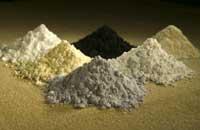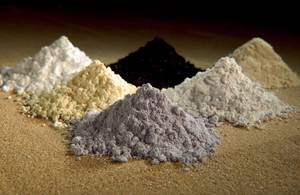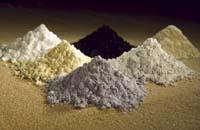Search for rare lands under the sea
2011/07/09 Galarraga Aiestaran, Ana - Elhuyar Zientzia
The news is very good for Japan, as the production and market of rare metals is in the hands of China. Therefore, in case of finding a way to exploit the underwater mines, Japan could escape the Chinese monopoly. And this has great importance for Japan, since rare metals are key in the production of technological products.

For example, the hybrid car industry has been developed thanks to hybrid metals. In fact, the development of hybrid cars is due to the need to reduce greenhouse gases, but this development would not be possible without the proper components. Although a hybrid car contains approximately 15 kilos of rare metals, these metals are essential in NiMH batteries, electric motors, regenerative braking systems and catalysts. For example, the best-selling hybrid car, Toyota Prius, has a kilo of neodymium in the engine and between 10 and 15 kilos of lanthanum battery according to model.
The same occurs in electronic, audiovisual products, telecommunications and computer tools. In fact, computer technology is based on rare metal magnets. They are used in hard disks, DVDs and CD-ROMs that allow to store more and more information in an increasingly reduced space. They are also essential in plasma TV screens, catalysts, LCD panels, magnetic resonance devices, turbines of wind turbines, etc.
In addition, all experts anticipate an even greater demand in the future, so the main producers (Japan, United States, Australia, France and Canada), to break dependence on China, look for new sources, In fact, rare metals are not so scarce, but they are difficult to extract commercially, which makes them so rare. And that's what gives so much power to China.
The Chinese Domain
In this country is the largest rare earth mine, Bayan Obo. It is estimated that it has 36 million tons of minerals. In China there are also clays with rare earth ions. These clays are in surface, so their extraction is simple and profitable. Thus, China has taken control of the market: 97% of rare metals marketed last year were of Chinese origin.
In addition to mining, processing of minerals and the extraction and separation of rare metals, Chinese companies predominate. Thus, at present, about 35.00 people work in the production of rare metals in China and 15,000 graduates in new products manufactured with these metals. In addition to the supplier of rare metals, China is also a user, as 60% of those used in the world were consumed there. In Japan and southeast Asia, 24% were consumed, while in the United States consumption was 10%.
For all this, the research of the geologists of the University of Tokyo can have a great importance. The rare metal sediments they have found are found in international waters, east and west of Hawaii, and east of Tahiti. Now we are studying how to extract it. And with this, they have awakened the concerns of those responsible for the environment, convinced that this activity can be very harmful to the marine ecosystem.
Published in Annex GAUR8.

Gai honi buruzko eduki gehiago
Elhuyarrek garatutako teknologia






